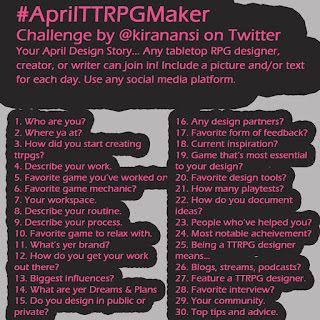I've had idea... it's for my game "The Law", if you haven't looked at it, go and do so immediately (it's on the GM's Day Sale )... The setting is Judge Dredd with the serial numbers filed off. There are mutants, cultists, rogue AIs, and corrupt agents to investigate. I've had what I think is a fun antagonist for a future sourcebook but I think it might be a bit delicate and potentially troublesome. It's a fanatical religious pseudo-mystical cult who believe in eugenics, genetic purity, and a concept of 7 progenitors who founded the races of humanity. The aim would be to draw on the writings of the 19th century Theosophical Society (yes, those same writings that basically ended up contributing to the worldview of the Nazis), then to apply a pseudo-mystic technology to the concept. My seven progenitors will be semi-mythical beings, from millennia ago. Basically one from each continent; negroid, mongol, caucasoid, australoid, polynesian, [mid...







